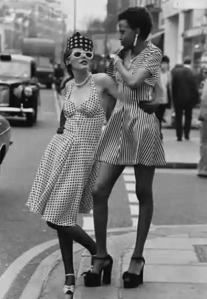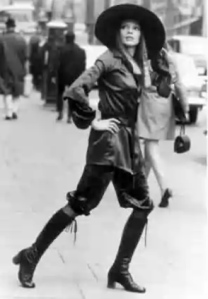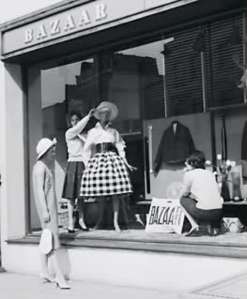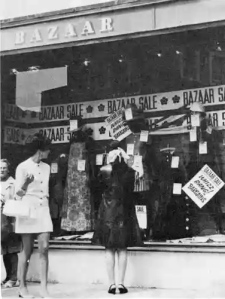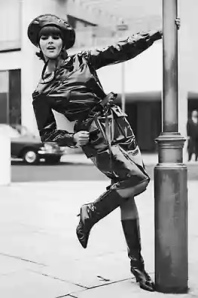One of the most devastating events in London’s recent history.
So I woke up this morning and was confronted with the news that there was a tower block in London’s Notting Hill on fire, a tower block people, a whole f*cking tower block. Thinking about it the whole day and how those hundreds of people were terrified in their homes; panicking, running (and apparently having been told to stay in their homes which does happen in quickly spreading fires) instead of or because they were unable to evacuate, trying to reach each other, being blocked from their loved ones and basically screaming in an inferno of hell. I know what it’s like to almost not wake up because of smoke but it’s nothing, a-b-s-o-l-u-t-e-l-y nothing compared to the heat, the fumes and the fear of this – one of the most horrifying incidents we’ve had in recent history. And it’s not even terrorism? See we can have people suffering and screaming for help in a monumental f*ckup of incompetence without involving the ‘bloody foreigners’. For gods-sake I can’t get the idea of these people’s pain out of my mind let alone what it must have been like for the people nearby seeing people cry out for assistance or trapped inside or having got out but knowing others were trapped inside being burned alive. What the hell is this – some kind of sacrifice? Is someone having a bubble? Where is their head? [Présenter sur] une plaque.
Poor people and animals being engulfed by flames – I’ve only seen fires of that extent in forest fires and in my nightmares (strange scenarios in dreams where it’s like you’re tested to see if you’d save people and it’s always ‘interesting’ to see who does – I always go back in to the surprise of some – and who doesn’t or who they’re willing to save).
Unknown dead and how many homeless?
An alleged exploding fridge? An exploding fridge people? What was it – a manufacturing fault or a bomb? Either way – it’s a f*cking fridge, those things are good at containment unless it was a big blast. Oh it would’ve been heavily damaged if not destroyed but burning down a whole tower block, even half? No.
12.45am in the morning – when everybody not away or on nightshift was asleep in their beds… Oh that is sick.
When emergency services – get that ’emergency’ services as in those who respond quick time not snail pace – arrive on scene, heck even before, they should be preparing to save lives not carry out the dead. 40+ fire engines (plus how many people, ambulances, police and others) and yet they were visiting a Tower of Babel, a building already [almost] falling to its ruin. In London with fire stations everywhere (even with the closures) and other support and emergency services everywhere – why are some saying they were slow and others reporting they were there in 6 minutes? Who was there in 6 minutes and how many? Tower blocks don’t go up in flames, each apartment acts as a cubicle, as a container – ok fire spreads quickly and hot air rises but it spreads through quickest possible routes e.g. open spaces with oxygen and wind such as stairs but this is a tower block, I doubt there were carpeted stairs and luxe wallpaper to help the fire on its way, stairways were more likely concrete tunnels/spirals. I had to snort at the irony of some thinking there would/should be sprinklers – as interesting or even wonderful an idea that is do you honestly think that kind of money would be spent on poor people? Even in regenerations? They only spent approx 8.7 million on this one (Grenfell Tower, a 1970s building refurbed by the landlord in 2016) for crying out loud.
General practice is to keep your doors [and windows if possible] shut and block draught spaces if you can’t evacuate and you’re blocked off. Basically you block it in its tracks.

Grenfell Tower Fire Policy.
Pic credit: https://twitter.com/shadowwraiths
How did it get out of the flat? It shouldn’t have spread from flat to flat let alone floor to floor without being unattended in time. Where the f*ck were the fire extinguishers in the building for residents to use and automatic fire alarms let alone the plethora of smoke alarms in the building i.e. one per flat and possibly carbon monoxide alarms (if the building has gas supply), that should’ve have brought attention to neighbours and the fire service. Quickly. Some people reported seeing Blue flames, did it hit the boilers or gas pipes?
This wasn’t like a fire that was attended to properly, it’s worse than a demolition.
Did they have smart boilers which send information back to the boiler company? They have temperature controls – didn’t any detect an unusual amount of heat not caused by the boiler(s) and hence reaching whichever setting they were left on too quickly? An en masse in multiple flats?
https://en.wikipedia.org/wiki/Grenfell_Tower_fire
The cause of the fire is not yet known, but many residents complained about poor fire safety and other problems with the building, which was managed by Kensington and Chelsea Tenant Management Organisation, a company limited by guarantee,[5] on behalf of the Royal Borough of Kensington and Chelsea. The residents’ organisation, Grenfell Action Group, had repeatedly warned of major fire safety lapses since 2013, and also noted past fires and fire-related incidents in similar blocks managed by the same company, which they felt were related to poor fire safeguards and management company fire policies, one of which was a directive telling residents to stay in their flats in case of fire. The group warned in November 2016 that only a “catastrophic” fire would finally force the block’s management to treat fire precautions and maintenance of fire-related systems to a proper standard.[6]
…
Grenfell Action Group warnings
After the fire, the Grenfell Action Group complained that its years of complaints to warn the Royal Borough of Kensington and Chelsea (RBKC), who own the building, and the Kensington and Chelsea Tenant Management Organisation who “supposedly manage all social housing in RBKC on the Council’s behalf” had been ignored, posting a message on its website:[21][22]
Regular readers of this blog will know that we have posted numerous warnings in recent years about the very poor fire safety standards at Grenfell Tower and elsewhere in RBKC. ALL OUR WARNINGS FELL ON DEAF EARS and we predicted that a catastrophe like this was inevitable and just a matter of time.
It was revealed that RBKC had threatened the Grenfell Action Group with legal action in 2013 in a bid to prevent the group criticising the council, claiming that such criticism amounted to “defamation and harassment”.[23]
Safety concerns ignored: residents association
From Nick Miller: David Collins, of the Grenfell Tower residents association, has told the BBC their concerns about the safety of the building were ignored by the landlord organisation – a not-for-profit organisation at ‘arms length’ from the council called Kensington and Chelsea Tenant Management Organisation – and by the council.
They had complained about “fire-safety concerns which were not investigated during the regeneration works”, Mr Collins said.“(There were) concerns over locations of boilers, concerns about escape, concerns about fire-escape lighting, the list goes on.
“I spoke to councillors and they refused to investigate.”
More interesting information: http://heavy.com/news/2017/06/kctmo-grenfell-fire-action-group-kensington-chelsea-tenant-management-organization-cause/
According to London Ambulance and witness testimony air ambulances were used but what about helicopters for the fire itself? The Fire Brigade couldn’t reach the upper floors, so weren’t helicopters used to help put the fire out?
It spread so quickly I had to ask myself what the fuck? Aluminium cladding is one of the speculative answers and has been responsible for similar fires around the world. Grenfell Tower’s shell was made of Reyondbond/Reynolux panels. According to the maker’s website (Alcoa Corporation), the composition consists of two aluminium sheets fused onto a polyethylene (plastic) core and is painted aluminium. That answered my confusion about aluminium not being enough of or even a carrier for the fire. It needed something else not only to melt but to spread the fire so quickly; the plastic including the cladding provided fuel? Anything else? But also, in terms of speed that would imply the outer fire/heat/compounding heat beat the inside fire, so the outer walls were heating up fast and hence in a sense the fire was coming from the outside at the point (after the initial cause/blast)? Social media photos/videos from the beginning of the blaze to the full on fire have been helpful in illustrating that the fire shot up/vertically on the outside before spreading horizontally to the rest of the building. What about the internal building insulation? The walls, ceilings/floors and electrical insulation. Did any of that provide a buffer? If so will the public at any point see photos of the ‘average’ burned apartment to see where and how fire spread inside of them?
How close was the supposed start of the fire to the main doors of the building? This is one of the reasons why I hate tower blocks – they’re not just prime candidates for ‘sick building [and tenant] syndrome’ they pose multiple difficulties for evacuation especially the higher up you go and then who decides which tenants go where i.e. according to age, disability, mobility, children etc. Tower buildings seem to ask whether some tenants more disposable than others. The social housing sector seems to be of the opinion ‘pile ’em [residents] high and dense regardless of the eyesore they cause to the increasingly surrounding yuppie area(s)’ but it’s ok as long as its ‘standard’ i.e. ‘we [housing associations] all do it, know that we do and the councils know we do so you the little individual can’t complain (and if our colleagues jump off a cliff like lemmings we will do it too)’. ‘Good/best practice’ can be used as a blanket excuse for many consumer issues. Housing estates are bad enough but tower blocks are dangerous and both become disgusting in a short time without a lot of community love and respect, a rare thing.
Places of worship have been open for shelter/aid – well done, I hate those buildings that sit empty most of the time and on public money when they should be providing shelter and sanctuary, possibly food and clothing 24/7. When you’ve got homeless outside looking at you – closed for business, with entrance fees, mostly empty, hosting antique and clergy wealth in your face – you’re not a house of ‘god’ or faith, you’re a slap in the face. Non-religious buildings and streetside provisions have been donated and provided and are the only heartwarming thing about this disaster.
As more news comes in for this one I don’t want to hear any excuses, not by the fire service, the govt, the architects, landlord or anyone; this was a straight up fail.
It’s far too early to say but I hope nobody’s getting any ideas about prime real estate and a possible goldmine.
Latimer Road doesn’t have a good history neither does Notting Hill in general and now it’s been added to.
A Lancaster West estate resident’s committee member said they are working with a missing list of “possibly hundreds” of residents – but that nobody who lived on the 21st residential floor or above survived.
The committee member, who did not want to be named, said: “I have been told that anyone past the 21st floor did not make it.
“The firefighters told them to stay where they were.
Public Responsibility
When shit happens, don’t do this:
https://en.wikipedia.org/wiki/Grenfell_Tower_fire
Social media misinformation
Reports that firefighters took two hours to respond were circulated on social media such as Twitter. In fact the first responders were on the scene within six minutes of the fire being reported. Firefighters were actively dealing with the fire, and several were injured despite their protective gear.[25]
There were genuine appeals for information about missing people on news media, Twitter, and Facebook,[26] but also fake appeals and other fake news on Twitter and Facebook. Photographs of people downloaded from the Internet (such as a Mexican journalist not associated with London) were posted with false “missing” reports. Unexplained rumours of 92 fatalities were circulating on 14 June.[27]
You undermine the entire f*cking process and genuine victims. You don’t want to be a boy who cried wolf in future either when you need help.
—————————————————————————————————————————————————–
Note: Casualty Bureau emergency line that has been advertised for people to find out about missing persons from the incident: 0800 0961 233
Stay informed:

Grenfell Tower Updates:
http://www.msn.com/en-gb/news/grenfell-tower-blaze





